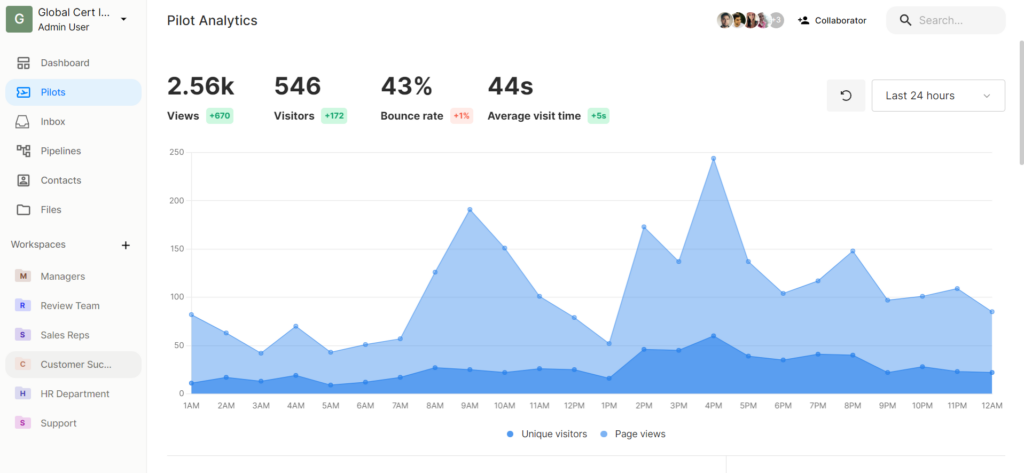Customer acquisition is essential for any business that wants to grow and succeed. It involves attracting potential customers to your business and convincing them to purchase your product or service. However, creating a successful customer acquisition strategy requires more than just advertising and promotion. It requires a deep understanding of your target audience, a compelling value proposition, and a well-planned approach to reach your audience across a variety of channels. In this guide, we’ll explore the fundamentals of customer acquisition and provide you with the tools and strategies you need to create a sustainable and effective customer acquisition strategy for your organization.
Table of Contents
What is customer acquisition?
Customer acquisition is the process of attracting potential customers to your business and convincing them to purchase your product or service. This can involve a variety of activities, such as cold calling, email newsletters, webinars, and paid advertising. A successful customer acquisition strategy requires personalized, omnichannel marketing based on high-quality customer data.
Customer acquisition is crucial for any business because it is usually the first step in the customer journey. Without customers, there is no business. The ultimate goal of customer acquisition is to find a sustainable way to continuously attract new customers. Additionally, customer acquisition can lead to benefits such as increased awareness and brand value. However, it’s important to note that the first impression a potential customer has of your business can impact how they view and interact with it later. For example, if the first touchpoint a customer has with your business is a promotion for steep discounts, they may perceive your business as low-end or in trouble.
Here are some fundamental principles for customer acquisition that businesses should keep in mind:
Develop a Customer Acquisition Strategy
A customer acquisition strategy is a plan for obtaining new customers while keeping costs reasonable. It should align the business model and product with the channels used for customer acquisition, and explain why this approach is best for the specific business.
A successful customer acquisition strategy should be targeted, sustainable, diversified, and flexible. It should be designed to find your ideal customers, seamlessly scale as your business grows, help you reach new customers across a variety of channels, and be capable of evolving with market and industry changes.
Know Your Target Audience
The first and most important step in customer acquisition is to understand your target audience. Businesses should conduct market research to determine who their ideal customers are, what their needs and pain points are, and what motivates them to make a purchase.
To develop a customer acquisition strategy, businesses need to understand their target audience. This includes conducting market research to determine ideal customers, their needs, goals, preferences, and the channels they use. The chosen channels should provide the best return on investment and reach the target audience.
Develop a Strong Value Proposition
Once you know your target audience, it’s time to develop a compelling value proposition. Your value proposition should communicate the unique value that your product or service provides. It should answer the question, “Why should customers choose us over our competitors?”
A strong value proposition can set you apart from your competitors and help you to attract and retain customers. It should be concise, easy to understand, and focused on the benefits that your product or service provides. To develop a compelling value proposition, businesses should consider the following:
- What makes your product or service unique?
- What specific benefits does your product or service provide to customers?
- What pain points does your product or service address?
- What sets your product or service apart from your competitors?
Choose the Right Channels
There are many channels available for customer acquisition, including social media, search engine optimization, email marketing, and paid advertising. Businesses should choose the channels that are most likely to reach their target audience and provide the best return on investment.
To create a strong customer acquisition strategy, businesses should develop a channel matrix that rates each channel based on attributes like potential impact, cost, and effort required to manage them. Businesses should also consider where their competitors are active and how well they’re doing in those channels. By figuring out where their competitive advantage lies, businesses can pick their top one to three channels.
Define your approach for each channel
To create a successful customer acquisition strategy, you need to work out an approach for each channel based on your business model, product, and the channel’s characteristics. This planning should include the budget required and the ROI you expect. Additionally, it should specify other efforts like required creatives, experiments to measure the channel’s effectiveness, and team members to involve or even hire.
It is important to tailor your approach to each channel to maximize its potential impact and to take into account the unique characteristics of each platform. This can help you reach your target audience more effectively and efficiently. By setting clear goals for each channel, you can track your progress and adjust your approach if necessary.
Furthermore, it is important to consider the budget required for each channel and the expected return on investment. This can help you prioritize which channels to focus on and allocate your resources accordingly.
Nurture Your Leads
Not all leads will convert into customers right away. It’s essential to have a lead nurturing strategy in place to keep potential customers engaged and interested in your brand. It’s important to keep in mind that customer acquisition is an ongoing process. Even after successfully acquiring customers, businesses must continue to nurture those relationships and work to retain customers over time. This can involve providing exceptional customer service, offering promotions and discounts, and regularly engaging with customers through email campaigns, social media, and other channels.
Another important consideration is the importance of data in customer acquisition. By collecting and analyzing customer data, businesses can gain valuable insights into their target audience and adjust their strategy accordingly. This can help businesses to better understand their customers’ needs and preferences, as well as to identify new opportunities for growth and expansion.
Monitor and Adjust Your Strategy
A successful customer acquisition strategy requires continuous monitoring and adjustment. By tracking your results and analyzing your data, you can identify what’s working and what’s not. This will allow you to make the necessary changes to improve your strategy and achieve your goals.
After implementing your customer acquisition strategy, it’s crucial to regularly monitor the data to ensure that you’re meeting your expected return on investment. Even if a channel starts strong, it may become less effective over time, emphasizing the need for continuous monitoring and adjustment. By analyzing the results and making necessary changes, you can optimize your strategy and achieve your goals.
You could easily monitor your customer acquisition strategy via Pipeliner‘s site analytic tools.

Another useful tool for monitoring customer acquisition is Segment. It allows you to collect and analyze customer data from various sources, such as your website, mobile app, and third-party integrations.
Conclusion
Customer acquisition is a crucial part of any successful business strategy. By understanding your target audience, developing a compelling value proposition, and choosing the right channels to reach your audience, you can create a sustainable and effective customer acquisition strategy that drives growth and success for your organization. It is important to continuously monitor and adjust your approach to ensure that you are meeting your goals and achieving a positive return on investment.
Furthermore, customer acquisition is an ongoing process that requires dedication and effort. It is important to nurture your leads, maintain strong relationships with your customers, and constantly adapt to changes in the market and industry. By collecting and analyzing customer data, you can gain valuable insights into your target audience and adjust your strategy accordingly.
In today’s competitive business environment, a well-planned customer acquisition strategy can make all the difference in the success of your business. By following the fundamental principles outlined in this guide, you can create a strategy that is targeted, sustainable, diversified, and flexible. This will allow you to find your ideal customers, reach new customers across a variety of channels, and continuously attract new customers over time.
In summary, customer acquisition is not a one-time event but a continuous process that requires ongoing effort. By implementing a customer acquisition strategy that is tailored to your business and target audience, you can build a strong foundation for your business and ensure its long-term success.

